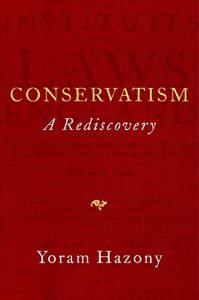Trans activists and their supporters argue that “gender” is nothing more than a social construct, subject to changes in social attitude. I don’t agree, but even if true, it still does not follow that boundaries between sexes in places like toilets and changerooms should be eliminated.
The case for eliminating these barriers is presented as a health care issue, predicated on the belief that it is emotionally harmful for biological males who identify as “women” to use men’s facilities. The assertion is made with all of the authority that science can muster. But there actually is no scientific evidence to support the claim.
A cursory review of the scant research that has been done on the subject reveals two significant and recurrent problems.
First, there is insufficient data to test the validity of the claim. To do so one must track changes to the mental health of individuals now permitted to use women’s facilities that were previously denied to them over time, while effectively controlling for all other variables that might affect that health. That data simply doesn’t exist yet due to a) trans males – especially children – only recently being permitted to use female facilities, and b) the immense, almost insurmountable complexity of controlling the variables.
But the second problem with the so-called research is much more insidious: committing the logical fallacy of affirming the consequent when interpreting what data does exist.
Let me explain.
Affirming the consequent (sometimes referred to in logic as the converse error) is an argument where the consequent of a conditional statement is used to “prove” the truth of its antecedent.
Consider the following example:
"If the lamp were broken (the antecedent) the room would be dark (the consequent). The room is dark, so the lamp must be broken." The logical error is readily apparent in this argument. The claim “if the lamp were broken the room would be dark” may be true, but that does not mean its converse “the room is dark, so the lamp must be broken” is true. There may be other reasons or combinations of reasons why the room is dark.
How does this apply to the current debate over use of changerooms? The argument goes like this:
Denying Dan, a biological male claiming to be a woman, access to women’s changerooms might harm his mental health. Dan exhibits signs of poor mental health. Dan’s mental health issues are due to his not being allowed to use the changeroom of his choice.
That, boiled down to its basic level, is what advocates of open changerooms (and other gender specific facilities such as toilets) are making. Stripped of obfuscation and pseudo-scientific claptrap, the fallacy of the argument is readily apparent. Dan’s mental health issues may be due entirely to other causes. It may, in fact, be the reason why Dan considers himself a woman in the first place, despite his biology.
This, and similar mistakes, have infected every nook and cranny, not just of the scientific community, but every area of policy-making that claims to be “evidence-based’.
Consider, for instance, the climate-change argument. Here is how it is made:
A changing climate will result in an increase in extreme weather events. There are more extreme weather events today than in previous years, therefore the climate is changing.
Once again, the flaw in reasoning is readily apparent. There may be other causes of so-called “extreme weather events” other than climate change that have more to do with local atmospheric conditions. Even the effects of climate change depend on local conditions, including whether they are good or bad. Who is to say that climate change is bad for Canada as a whole, most of which is arctic or sub-arctic and could benefit from a gradual warming of the earth. What about Greenland?
Notwithstanding these reasonable, if uncomfortable, questions, weather is now interpreted everywhere through the lens of contemporary climate-change theory, and the interpretation is then cited as proof of the theory.
The arguments are so circular that they leave sensible people’s heads spinning.
What about the claim that climate change is induced by human activity? Again, there is plenty of theory (some of which may even be plausible), but not much science.
In genuine science, it isn’t enough to posit a plausible theory, that theory must be able to withstand a ruthless search for its errors. Real scientific research consists of seeking evidence that a theory is wrong, not that it is right. Unfortunately, in today’s pseudo-scientific world, facts that contradict the theory are ignored, and skepticism – once considered the hallmark of a good scientist – is punished.
The economist Thomas Sowell wrote in 1993 that
Much of the social history of the Western world over the past three decades has involved replacing what worked with what sounded good. In area after area – crime, education, housing, race relations – the situation has gotten worse after the bright new theories were put into operation. The amazing thing is that this history of failure and disaster has neither discouraged the social engineers nor discredited them.
Sowell was referring to social policies when he wrote these words. Today, the same observations could be applied accurately to virtually every other aspect of public policy.
Galileo and Copernicus are rolling in their graves.
Dear Reader,
I don't charge for my content, but...
I do accept voluntary contributions from readers like you who appreciate insightful analysis and value intelligent debate. If you like what you are reading, please consider making a small one-time or monthly contribution by clicking here.




